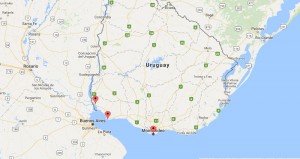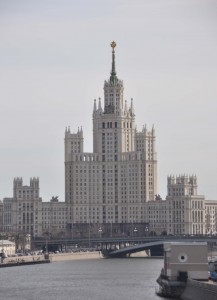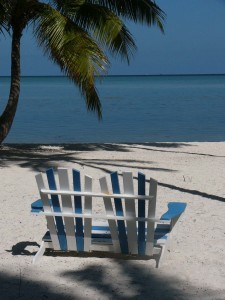Judging by our recent experience, the answer is yes.
Here’s my story just published in the Miami Herald:
https://hrld.us/2J4PIsM

The Fez souk was filled with the bounty of the nearby fields: crimson beets just pulled from the field, bean pods the size of scythe, basins filled with goey honey-covered pastries. Cockerels on a string, strutting smartly in ignorance of the pot that awaits them.
It was nearly halfway through Ramadan, the Muslim month of fasting. And for many, the focus was on food — the delectable tagines that await them each evening when the daylight prohibition on food and liquids is lifted.
For 30 days, observant Muslims worldwide observe the fast. Our Moroccan guide explained it as a time of prayer and contemplation, when Muslims focus on self-discipline and are reminded what it is like to be poor, without the casual expectation of sustenance on demand. The muezzins loudly sing the call to prayer; the faithful head to the mosques and their prayer rugs; in between many pray in a corner. In Tangier the call resounds from minaret to minaret to minaret throughout the long dark night — more vexing to uninitiated visitors than the paucity of open bars during the weeks of observance.
“Ramadan is a state of mind,” says our guide Rachid. He’s thinking of the obsession with food that permeates the marketplace, the sense of deprivation that drives some to faintness and near-distraction. He assumes a more reasoned approach, tuning into a simple discipline that knows that in a few hours, the fast will break, and in a few weeks, the season will end. The hours between bind community with tradition and belief in a surprisingly cheerful welcome to neighbors and foreigners both.
This idea of a reset is oddly appealing. Going without coffee or water for the entire day is beyond me; I can’t imagine making it to the computer, let alone my first meeting, without a cup of joe. But to set my mind to foregoing food during daylight hours is a path to the discipline that I’ve pushed aside in the hurry-scurry world of instantaneous feedback. Reboot my hard drive Thoughtful action in lieu of gut response is a concept ready for a revival.
So I decided to keep a modified Ramadan. While didn’t givie up liquids, I ate only during the hours of darkness. I refrained from reaching for that glass of sauvignon blanc with dinner or the Moscow Mule on Friday night. When evening comes, I told myself, I”ll try to approach each mouthful with mindful appreciation of taste and texture. I’ll avoid TJ Maxx and Amazon, and do my best to start the day with a few deep, contemplative breaths. The practice will remind me of a glorious trip and the value of cultures other than my own.
I made it four days.
The weekends weren’t so difficult, even though I had to sit through a brunch with friends sipping only coffee. And I wasn’t even that hungry during the day. But by my second work day of going without, my brain checked out. By 4 p.m. I was slightly punch drunk. I couldn’t talk in a complete sentence — much less edit a complex story for publication.
The next morning, I was back to regular meals. Smaller, more cautiously eaten than in my usual at-the-desk shovel, but food nonetheless.
For Muslims, the fasting would last another 10 days. When it ends today at sunset, I’ll mark it with a moment of silence and a new appreciation for the rigor of a month of strict limits.
I’ll also honor the hunger of those who go without on a regular basis: the homeless, the struggling, the students who go school hungry in winter and without school-provided breakfasts in the summer break. Food isn’t just from the palate or belly, its for the mind as well.
READ MORE: TREKKING WITH GORILLAS
More than half the world’s remaining mountain gorilla families are in Uganda, concentrated in two parks, Bwindi Impenetrable National Forest and the Virunga Mountains, which shares a border with Rwanda. The mountains also spill into the Democratic Republic of Congo. Most visitors go to Uganda or Rwanda. (DRC visitors typically travel from Rwanda.)
In all areas, gorilla trekking permits are limited and date-specific. They must be arranged in advance. Uganda permits cost $600 per person per day; they also offer some low-season discounts. Rwanda recently increased its permit fee to $1,500 per person per day. The DRC charges the least, $450.
UGANDA: Our trip to Bwindi National Forest was arranged by the knowledgeable London-based firm Africa Travel Resource, africatravelresource.com, which arranged our flights to/from the international airport in Entebbeto Bwindi National Forest, our hotel in Bwindi and a night of hotel in Entebbe, plus an ongoing flight to South Africa.
Coincidentally, ATR is owned by the same company as Mahogany Springs Lodge, mahoganysprings.com, which we had specifically requested. Lodge rates in low season (March-May, October-November) start at $240 per person per night, double occupancy and include three meals, water in the rooms and wine or beer with dinner. High season (December-February, June-September) rates start at $287 per person.
Locally, the firm Trek East Africa has been recommended, africagorillatreks.com.
To learn more about the highly regarded Bwindi Community Hospital, contact bwindihospital.com
RWANDA: Rwanda’s big advantage is proximity; the gorilla region is a two-hour drive over paved roads from the capital of Kigali. One highly recommended agent is Phoebe Weinberg of Greatways Travel, greatwaystravel.com.
More than half the world’s remaining mountain gorilla families are in Uganda, concentrated in two parks, Bwindi Impenetrable National Forest and the Virunga Mountains, which shares a border with Rwanda. The mountains also spill into the Democratic Republic of Congo. Most visitors go to Uganda or Rwanda. (DRC visitors typically travel from Rwanda.)
In all areas, gorilla trekking permits are limited and date-specific. They must be arranged in advance. Uganda permits cost $600 per person per day; they also offer some low-season discounts. Rwanda recently increased its permit fee to $1,500 per person per day. The DRC charges the least, $450.
To read about sailing on the eastern Danube from Bucharest to Budapest, click here:
For tips on how to choose the river cruise that’s right for you, click here:
Scenes from the journey:
 As with any vacation, when it comes to river cruises, there’s more to getting the best value than meets the eye.
As with any vacation, when it comes to river cruises, there’s more to getting the best value than meets the eye.
Nearly all European river cruises include Wi-Fi, meals, coffee and tea throughout the day, and some excursions. But some include only the most basic city tours in groups as large as 40 or 50 people, charging extra for experiences that are unique; others include a wide range of excursions in the fare. Some lines charge extra for dinner wines and gratuities, while others include them. Cabin designs and menus also vary.
What matters, of course, is what matters to you.
Our group of 12 decided on the river less traveled — the eastern Danube, then traveled overland on our own to the easily reached cities of Vienna and Salzburg.
Once we decided on a destination, we made a list of all lines that sailed that route. Then we created a group spreadsheet on Google Docs to ensure that we were comparing features correctly. Each couple was assigned a line; some called the company directly, while others consulted with cruise travel agents recommended by national magazines.
Our categories:
Once we had narrowed to a handful of lines, we consulted our favorite of the river-cruise specialist travel agents we’d spoken with. She served as a reality check against our own research, so we felt confident.
More importantly, she alerted us to a special airfare that was far cheaper than anything we could book on our own, and another promotion that allowed us to book into a higher cabin level at a small premium. She also arranged a group discount and handled the air bookings and payments — no small matter with this group.
Everyone in our group agreed we would recommend her: Angelica Berwick at Fine Voyages.
When we added up inclusions and promotions, we found the value of upscale Scenic Cruises outweighed lines with lower base fares. Included were all tips, house liquors and wines, butler service, a wide range of small-group tours and electric bicycles. Because we booked on the “Diamond deck,” a rave-worthy degustation dinner and laundry were included.
Each December / January, travel magazines put our their lists of the year’s best, hottest, most undiscovered (but food-worthy) places to go. I’ve personally written a few of these, so I know that the lists are derived from a variety of inputs, including travel agent bookings, destinations that have recently added flights or facilities, and a general avoidance of world trouble spots.
In this year unlike any other, the trouble spots have yet to be determined. Europe is still suffering from last year’s attacks — not that that would stop me from traveling to France, England, or any place else on the continent, especially while the dollar is strong. But with our foreign policy still unclear, places that we once considered friendly may not be in the coming year.
My view for 2017? Go the places you’ve most longed to go, but leave time and money for unexpected invitations and unforeseen airfare sales.
The first took me on a return last fall to Israel, a place I love more and more each time I visit. Surprisingly good food, spectacular views, and an everyday life where the friendly interactions between Christians, Jews and Muslims give me hope — all are part of my Israel experience.
https://www.mapcustomizer.com/map/Uruguay2017map
This year: Uruguay, thanks to interest from travel-savvy friends. We’ll have a few days in Montevideo before moving on to the wine country of Carmelo and historic Colonia. (No Punta del Este for us; hey, I live in Miami!)
And then it’s on to Africa. On our way to a safari (purchased at a charity auction at a budget price), we’ll stop off in Dubai (thanks to a great airfare sale on Emirates in early January) and then to Uganda for gorilla trekking. (While Rwanda usually gets top billing, there technically are more gorillas in Uganda, provided the gorillas have paid attention at the border crossing.)
On my wish list: Asia — I’m thinking of the Pitcairns — and a polar bear quest in the Arctic.
In my world view, travel is life.
Follow me on Instagram and Twitter @janewooldridge.
 Regardless of your political stance, you may be feeling a bit like Jon Stewart at his recent Stephen Colbert show appearance: Tired and bedeviled by the pace of 2017.
Regardless of your political stance, you may be feeling a bit like Jon Stewart at his recent Stephen Colbert show appearance: Tired and bedeviled by the pace of 2017.
The island of Bali — one of my personal favorite places, once you get off the tourist track — may have the antidote. On the eve of the Hindu New Year, villages island-wide parade through the streets hoisting giant effigies of mythical monsters. The New Year’s Eve pageantry — this year, March 27 — is meant to draw out the demons. The next day, the island goes silent in an attempt to trick the evil spirits into thinking the place is moribund so they’ll go away.
This bit of news arrived in my in-box this morning courtesy of a press release from a
five-star Balinese resort. I’ve been in Bali during other festivals — including a glorious midnight march up a cliff in moonlight, followed by a mock battle to chase away hostilities. But I’ve never been to Nyepi, as the new year is called. Maybe this should be the year.
PHOTO: Courtesy of Bali Four Seasons Resort at Jimbaran Bay
Yesterday’s Miami Herald published a truncated version of the Great Vacation Tips for 2016. Here on the blog, we’re going into more detail.
So this tip might seem obvious: You better shop around. Especially when it comes to expensive trips.
But that doesn’t just mean going to Trivago or Kayak or Expedia. It means getting on a phone. And it means comparing more than just price.
A friend who is planning a trip to Papua New Guinea — far away and yes, pricey — got a quote from several top-end travel arranger. Because she wants to visit during the August tribal gathering called the Sing-Sing, she’s required to travel with a group, at least for that part of the trip. She cares passionately about great guides. As for hotels, well, as someone who has been to PNG, let’s just say that there’s little choice. One company gave her a great itinerary — and an equally lofty price. A second company gave her an itinerary that was virtually identical, right down to the hotels — at half the price.
Another example: A group that’s traveling on the Danube this summer. A half-dozen cruise lines offer similar itineraries. Each couple in the group was given a list of details to investigate and assigned a company. On the check-out list were items including price, dates, travel time between the tour’s city of origin — Bucharest or Istanbul — and the ship, costs, inclusions and touring options. When the chart came together, it was clear that the trip that looked to be the least expensive didn’t include as much and involved larger tour groups with fewer land excursion options. For nearly the same price, the group could get a trip with smaller day touring groups and significantly more excursion options. And the cabin configuration was more appealing.
The lesson: Do enough research to figure out what you want, then compare options from well-regarded companies and suppliers. If this is a once-in-a lifetime experience, focus on the one thing that is most important to you — A great guide? The best hotel? — and let the rest fall where it may. If it’s a nice trip but not an important anniversary, you might be more mindful of cost than luxuries.
My latest value trick is an old-but-good one: Join the hotel loyalty club.
I rarely manage enough points with any one hotel brand to get a free stay. But hotels often offer discounts for members and include extras, like Wifi, for members. Twice recently I found discounts far deeper than what I could get via AAA, AARP or online sites by joining the hotel chain loyalty club and booking directly on its website. And let’s face it: Who doesn’t like a deal?
There is a trade-off: Your information and a flood of new emails in your box. My information is already in the giant universal meta database, just by virtue of the fact that I exist. Handing my address and email to one more company isn’t going to make much difference, I figure. (I never allow them to store my credit card info, just to be extra safe.) As for the extra emails…that’s where Unroll.me comes in. (Check previous posts for details.)
If you travel a lot on business, of course, those hotel points can quickly add up to free stays. But even if you’re an occasional roadside motel / family traveler, take a look at loyalty programs. Choice Hotels include 11 familiar brands – including Clarion and Comfort Inn; most years they run summer specials where a handful of stays will earn you a free night. At Hotels.com, 10 nights in any hotel booked on the site will earn you a free night. Other chains and booking sites have similar programs.
So what’s that free night worth? Maybe not so much if you’re roadtripping to Georgia. But if you’re heading to the other Georgia, that could be a free night at a Tbilisi hotel like the Radisson or Marriott that normally charges around $275.
On my last trip to Copenhagen, my free night was worth more than $250 in high season. Not a bad deal.
Now that you know when you can take off, and where you want to go, you know which destination deals you want to track.
There seem to be a grillion (and possibly more) websites out there that will help you. Here are a few worth checking. (Please share you faves, too!)
Smartertravel.com. Subscribe to this website for a daily email on the latest airfare and package deals, along with articles written some of the consumer travel industry’s most knowledgeable experts. (If you find the daily newsletter more irritating than entertaining, you can subscribe to Unroll.me and have it put into your daily email roll up.) . You can also sign up for alerts by city of origin, so you can track all the cheap flights from your local airport.
AirfareWatchdog, a sister company to Smartertravel (both are owned by the same people as Cruise Critic and TripAdvisor) offers terrific alerts on air deals. Unlike most sites that lean entirely on computer algorithms, AirfareWatchdog has actual humans who test the deals before sending out alerts. The site also allows you to watch specific route pairings.
Online booking sites Travelocity and Expedia also offer deal alerts. Travelocity’s Destination Watcher lets you designate whether you’re looking for air, hotel or car deals.
When it comes to getting a deal on a business-class fare, TravelZoo is one of the few sites that regularly highlights these; you can find them on their own tab under airfares. Better yet, sign up for their alerts. Skyluxtravel.com also highlights business class sales.
Luxury travel is a different conversation — one we’ll get to. So are cruises, hotels, packages and tours. We’ll get to those another day.